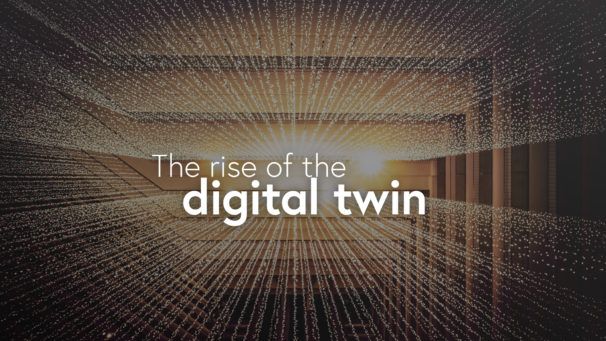The rise of the digital twin

Author: Charles McIntyre, Chairman and co-Founder of IBIS Capital and EdTechX
Replicating the real world to understand better how to solve a problem, was most dramatically played out in the rescue of Apollo 13. In 1970, the lunar landing was aborted after an oxygen tank failed two days into the mission. Houston had to find a solution for the lunar module to support three men for four days when it had in fact been designed to support two men for two days on the lunar surface. Using an exact replica of the lunar module on earth, NASA was able to test and provide an improvised solution to the astronauts to provide a safe return.
Today, the mirroring of physical objects has become increasingly common with the emergence of digital twins. A near-real time digital representation of the physical attributes of a factory, product or process. So for example, running a digital replica of a jet engine for 10,000 hours to learn about the impact of component stress on the performance and safety of the aeroplane.
However, is there a role for the digital twin in the way we learn itself? What happens when we create a digital replica of ourselves, our learning avatar? There is already a lot of data we can collect about how we learn. Artificial Intelligence is applying this personal data to adaptive learning and predicting where our weaknesses lie. As we understand better the mix of auditory, visual and kinesthetic learning for each individual, so the bespoke nature of the pedagogy can be adapted.
So now imagine, we combine a detailed data map of our personal learning process with a sophisticated artificial neural network. Our digital avatar can now apply itself to a whole series of learning tasks and work out which approach, and forms of content, best apply to us. Having completed this filtering process on our behalf, our twin now is able to provide us with the quickest and easiest way for us to acquire the relevant knowledge we are after.
This may all seem like the realms of sci-fi but it is closer than you think.
We can now send our digital twin into the lecture theatre or let it loose on working out how to use our new digital camera. Helping us learn and understand in a way only we, at very personal level, can. This may all seem like the realms of sci-fi but it is closer than you think.
First of all, we are already leaving a vast trail of digital fragments of ourselves which are being greedily hoovered up across social media, from the likes of Instagram, Facebook, LinkedIn and Twitter. These fragments provide a detailed picture of who we are, how we react, and how we learn. Second, you don’t have to go far in Silicon Valley to find companies like Oben, who are creating 3D avatars that look and talk like their human counterparts. Oben’s avatars, within a short period of time, can “learn” how to speak like you and then interact with others in your place, in multiple ways and in multiple languages!
What we are witnessing is the collaboration between artificial intelligence and the human learning process. The populist scare stories of robots replacing humans is not the dystopian future we are heading for, instead, we are looking at the integration of capabilities. The soft skills that are innate to homo sapiens such as creativity, problem solving and empathy, are combined with the hard skills of data processing and analytics. Robot and human, a “co-bot” working in harmony. The robot in this case is not the processing brute of yesteryear, but increasingly a learning machine in its own right. Artificial intelligence is now modelled on the learning process of the human brain, so that there is an iterative process of learning which provides feedback loops on the progress being made. Artificial neural networks are experiencing a growth in capability similar to Moore’s law, doubling every 2.6 years. By 2050, it is expected that this deep learning will be equivalent to the capabilities of the human brain.
The world of education will need to respond to this changing landscape. We are past the Spotify-moment where we digitise content and deliver it, broadcast fashion, to the world. We are at the point where personalised and adaptive learning can be matched ever more efficiently to our own learning style, through the collaboration of our digital twin and deep learning. Bespoke content for a pre-tested bespoke learning process using AI and our twin. Perhaps time for a new word – the “twAIn”…




